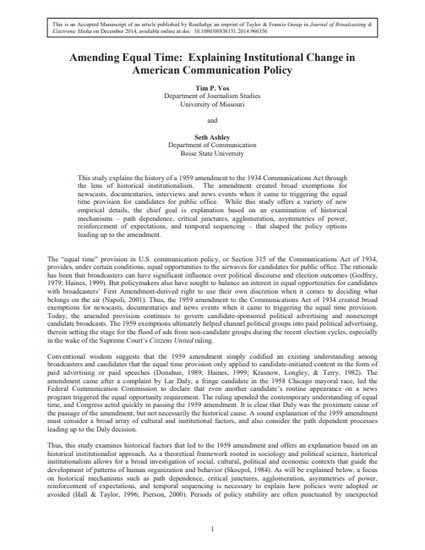
This study explains the history of a 1959 amendment to the 1934 Communications Act through the lens of historical institutionalism. The amendment created broad exemptions for newscasts, documentaries, interviews, and news events, triggering the equal time provision for candidates for public office. While this study offers a variety of new empirical details, the chief goal is explanation based on an examination of historical mechanisms—path dependence, critical junctures, agglomeration, asymmetries of power, reinforcement of expectations, and temporal sequencing—that shaped the policy options leading up to the amendment.
This is an Accepted Manuscript of an article published by Routledge, an imprint of the Taylor & Francis Group in the Journal of Broadcasting & Electronic Media on December 2014, available online at: doi: 10.1080/08838151.2014.966356
Available at: http://works.bepress.com/seth_ashley/17/
